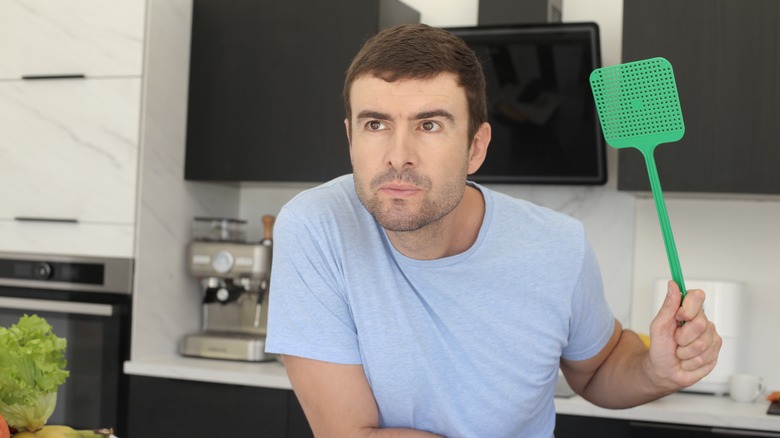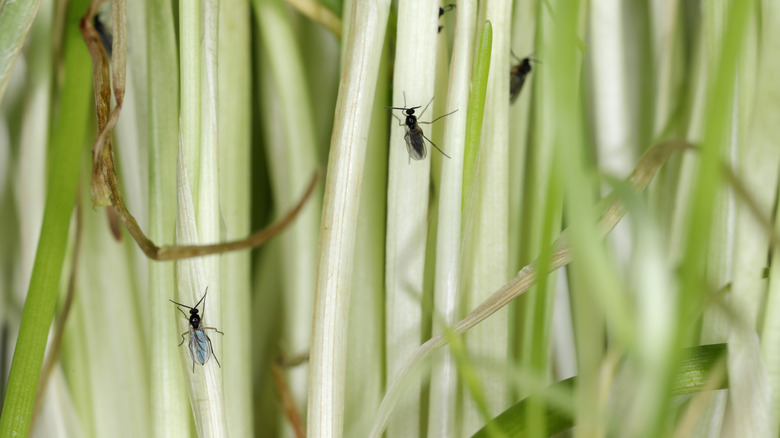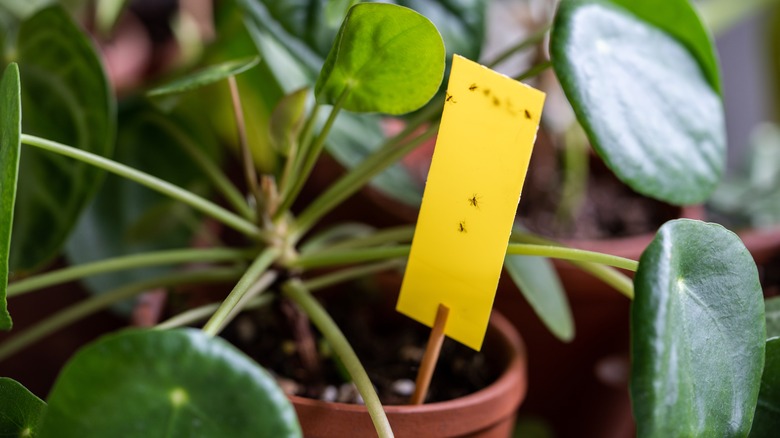Tiny Black Bugs In Your Home That Aren't Fruit Flies (& How To Get Rid Of Them)
Fruit flies are often a good first guess when you see tiny black bugs flying around your house, but if the little pests are more interested in your plants, windows, and glowing electronics than they are in your fruit, you may be dealing with a different problem — fungus gnats. These extremely common but often misidentified household pests can be a challenge to get rid of. Still, by making minor changes in how you care for your houseplants and investing in some sticky traps, you should be able to bring most infestations under control.
While fungus gnats look deceptively similar to fruit flies, they're actually not even in the same family, with fruit flies belonging to the Drosophilidae family and fungus gnats belonging to the Sciaridae family. The insects have different shapes, too, with fruit flies having a more rounded body and fungus gnats instead being shaped more like mosquitoes. You can also generally distinguish these pests by where in your home you see them. Fruit flies primarily hover on or around soft or rotting fruit. Fungus gnats generally prefer potted plants and can sometimes be found around windows and bright screens.
Bottom watering your plants can help control fungus gnats
Fungus gnats are so often found around houseplants because they lay their eggs in damp potting soil and their larvae live there happily eating fungus and plant matter until they mature. In severe cases, these larvae can damage or even kill plants. Because they like moist soil and stay close to the surface, you can generally get rid of fungus gnats, or at least significantly reduce their numbers, by changing how you water your plants.
Instead of pouring water into the top of your planters, consider switching to using a bottom watering method to reduce fungus gnats. For this method you just place your entire plant, pot and all, inside a larger container with several inches of water at the bottom and allow the growing medium to absorb the water. Make sure you don't leave your plant sitting in the water for longer than an hour or two though. Fungus gnat control isn't the only reason you should be bottom watering your houseplants, as this method also ensures deep roots are watered while leaves are kept dry. You can also add a thin layer of sand to the top of your plants' soil to make it more difficult for the gnats to lay their eggs.
Additional methods to control fungus gnats
While proper watering techniques can go a long way towards managing your fungus gnat situation, they may not be enough to completely deal with the little insects. Sticky traps or even pieces of tape folded to expose the sticky sides can quickly catch large numbers of adult gnats. These sticky traps are also a great way to keep fruit flies away.
If even sticky traps don't seem to be making a dent in the size of your fungus gnat infestation, you can consider adding products with Bti (Bacillus thuringiensis subsp. israelensis) into your houseplant's soil. This bacteria is harmless to humans, pets, and even most other insects but kills the larvae of fungus gnats and mosquitoes. Be sure to follow the instructions on the package as it needs to be watered in well and likely requires repeated treatments. Additionally, make sure to examine carefully and maybe even quarantine any plants that spend summers outside and winters in the house, as they can easily bring gnats inside with them and infest other plants. Treating infestations on these plants before bringing them inside can save you a lot of work and stress down the line.


